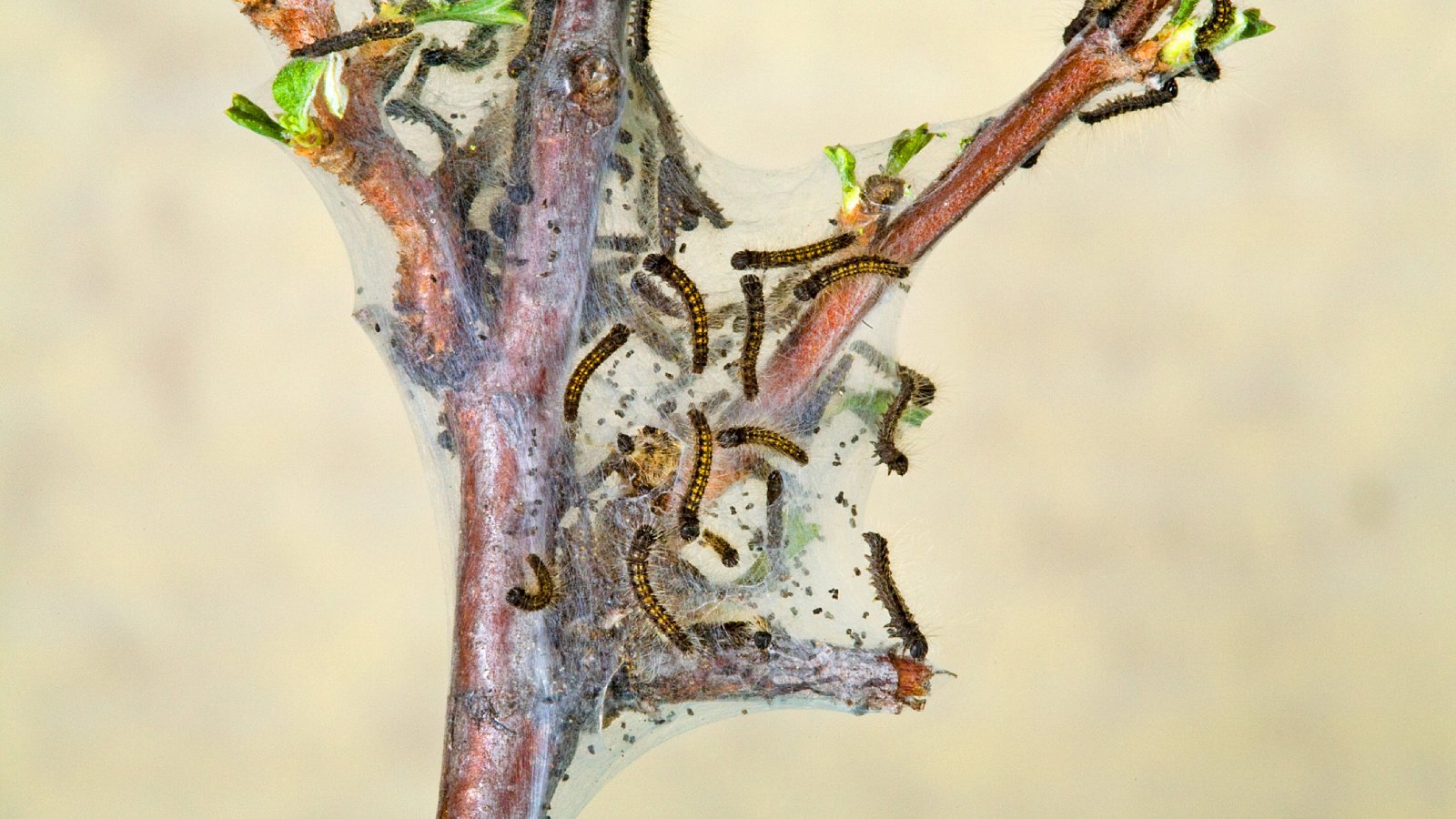How To Identify And Control Western Tent Caterpillars
Western tent caterpillars are a devastating pest that ravage the west coast of the US. Here's how to stop them.

The Western tent caterpillar (Malacosoma californicum) feasts on the foliage of broadleaf trees and shrubs. It is found throughout most of the western United States, up into southern Canada and down into areas of northern Mexico.
Damage caused by the larvae of the Western tent caterpillar moth can be devastating and occurs during outbreaks that can last for 3-5 years resulting in defoliation or even deforestation of thousands of acres of forest tree hosts. For this reason, Western tent caterpillar control is of paramount importance. Read on to learn how to manage Western tent caterpillars.
Western Tent Caterpillar Life Cycle
Adult Western tent caterpillars are large moths in colors varying from dark reddish brown to yellow, gray or tan. Their eggs are laid in oval masses of 100s, encircling stems, twigs and branches and covered in tell-tale white silken tents in the spring.
The larvae live inside the tent where they continue to eat and grow as a colony until they hatch when about 1/8th (0.31 cm) long the following spring. Most larvae have a blue head and body dotted with black markings. The entirety of the larva is covered in white-tipped orange/brown hairs.
Larvae mature within 30-42 days whereupon pupation occurs. The larvae spin silk cocoons on branches of host or non-host trees or in leaf litter. The pupal stage lasts 12-18 days whereupon adults emerge (late July to early August) and the process begins anew.
Identifying Western Tent Caterpillar Damage
Depending upon the location, the hosts of the Western tent caterpillar might be quaking aspen, cottonwoods, red alder, crabapple, ash, birch, hazel, hawthorne, madrone, oak, willow, chokecherry, bitterbush, mountain mahogany, ninebark, sumac, wild currant, wild rose and various fruit trees.
Their devastation is evident by the defoliation of the tree or shrub which may result in branch dieback, top-kill, reduced fruit set or reduced growth.
Sign up for the Gardening Know How newsletter today and receive a free copy of our e-book "How to Grow Delicious Tomatoes".
Evidence of the caterpillar is quite obvious with the large silken tents filled with visible larvae in crooks of trees or shrubs.
Western Tent Caterpillar Control
The Western tent caterpillar moth does have some natural predators. These include 356 species of parasites and predators as well as some disease organisms. Of these, the most valuable are parasitic wasps which feed on the larvae of the Western tent caterpillar.
A virus is also known to infect the larvae and quell outbreaks.
For the most part, Western tent caterpillar infestations are more of a nuisance so they are often allowed to run their course unchecked. If they affect fruit trees or timber production, however, alternative controls may be used.
Small colonies such as those found in the home landscape can be removed from the trees by pruning out and disposing of the tents. If you try this at home, do it in the morning when more of the larvae are still in the tent, and then dispose of the tent in soapy water.
For larger scale infestations such as in an orchard, chemical insecticides may be used or the biological insecticide Bacillus thuringiensis. For more information on controlling Western tent caterpillars, contact your local extension office or forest entomology department.
Frequently Asked Questions
What do Western tent caterpillars turn into?
Western tent caterpillars turn into large brown moths with two diagonal lines or a brown band across each wing in the summer.
What does the Western tent caterpillar eat?
Western tent caterpillars eat quite a variety of foliage from trees and shrubs including those from madrone, ash, willow, poplar, quaking aspen, hazel,and hawthorne as well as from fruit trees such as apple, cherry, and plum to name a few.

Amy Grant has been gardening for 30 years and writing for 15. A professional chef and caterer, Amy's area of expertise is culinary gardening.
